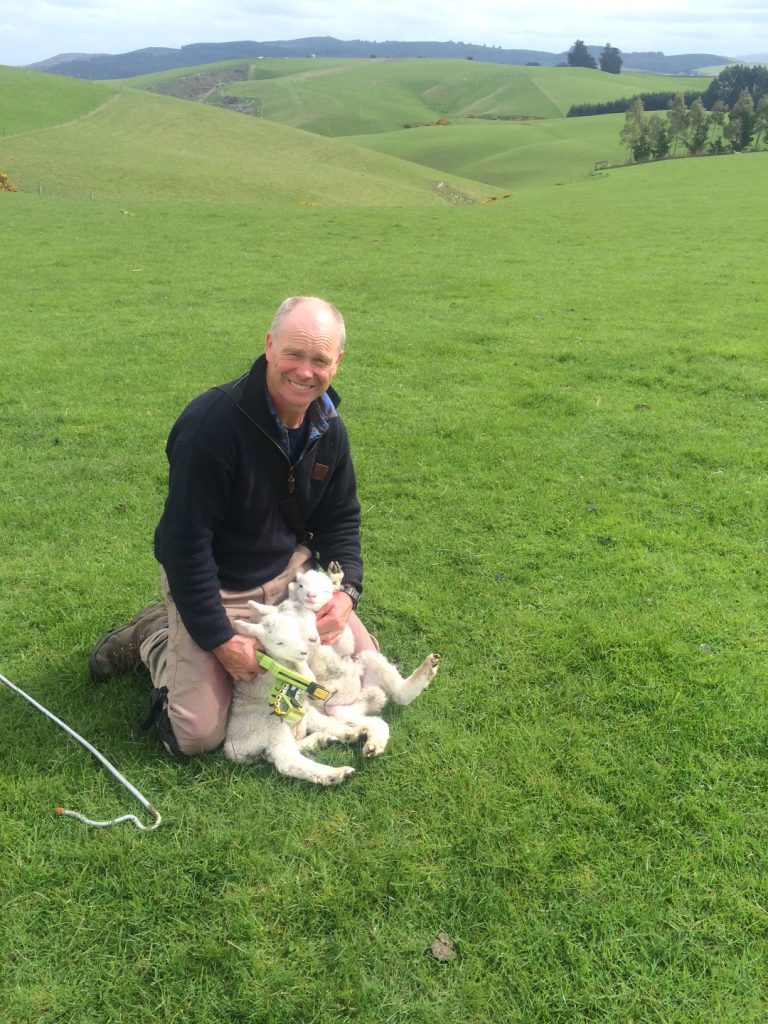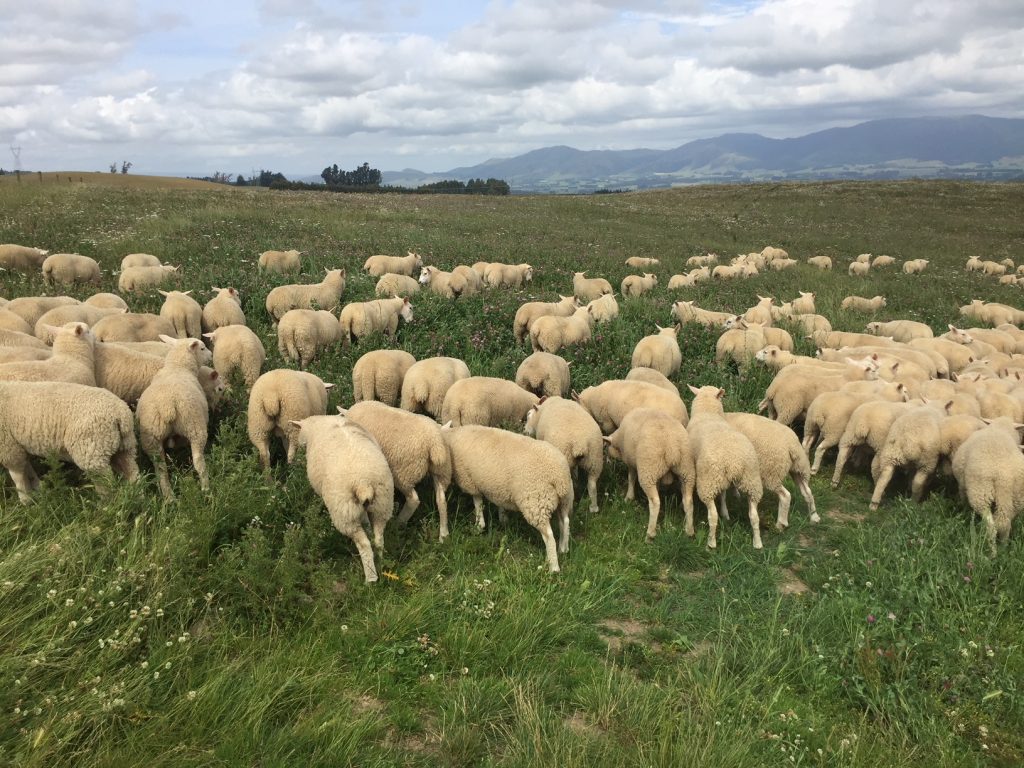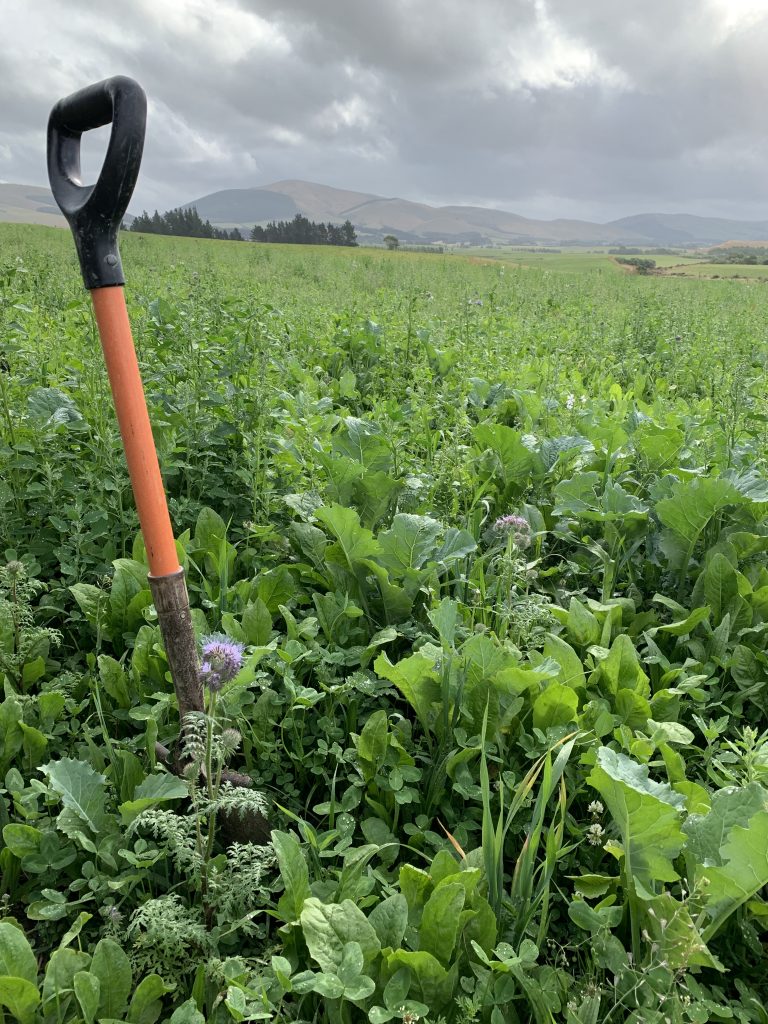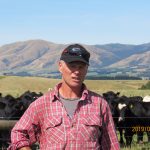An Otago farmer shares 20 years experience in eschewing conventional farming
When Allan Richardson told his father in 1998 that he planned to convert a small portion of his West Otago sheep and beef farm to organic, his father cautioned him to do it right at the bottom of the farm, where the neighbours couldn’t see.
To his father it felt like a step backwards in time, as he had built up his own farm from nothing and had seen first hand the increased yields delivered by application of superphosphate and sprays to control gorse. He could not understand why Allan would make things more difficult for himself.
Yet Allan could see where the market was going. He had an inkling that producing organic lamb, beef and wool would deliver premium returns, and that global demand would rise.

Photo: Allan Richardson
It turns out he was right. In the 22 years that Allan has been farming organically, the value of the global organic food and beverages market had ballooned to US$165.52b by 2018, and is anticipated to reach almost $680b by 2027.
“If it hadn’t been working, we would have packed it in long ago.”
A year after converting a block of land to organic, Allan was selected for a Nuffield scholarship in 1998, and with his wife Sonia used the opportunity to travel and study organic farming systems across the UK, Europe, Scandanvia, Canada, and the US. Allan learned a lot about what it took to farm successfully, and even more about global organic markets.
Upon his return to New Zealand, what started out as market-driven motivation soon became a passion for Allan. Over the next six years that 40ha organic block at the bottom of the farm was extended to the whole 1300ha property, Avalon Farms and Avalon Genetics, about 30 minutes North of Gore.
At that time, 20 years ago, organics weren’t on the radar of many farmers or consumers in NZ, and while many of his farming friends were curious, they were initially slow to come on board. Without a guidebook, and with the Internet only just beginning to show its promise for knowledge-sharing, little information existed to support organic farmers on their journey. Uptake within the farming sector was slow in these years, but eventually Allan began to see other farmers in the region going organic.
However, Allan was starting to see some of the ways in which organic farming was not the panacea for modern agriculture. Still regularly ploughing fields, soil carbon was lost and premiums weren’t as good just a few years earlier.
By 2016 Allan began paying close attention to what he was reading about regenerative agriculture (regen ag). Friend and fellow farmer Hamish Bielski urged Allan to watch YouTube clips of farmers who were achieving great results with regenerative farming practices. While organic farming tends to focus on practice – what you can and can’t do on your farm – regenerative farming adheres to a much wider set of general principlesDefinitions and Principles of Regenerative Agriculture:
1.The Original Principles of Regenerative Agriculture (Rodale Institute)
2.Definition of Regenerative Agriculture (Terra Genesis International)
3.What is Regenerative Agriculture? (The Carbon Underground) about land management.
The efforts he saw were hugely encouraging, made a lot of sense, and the various stories filled the gaps Allan had been looking for in organics.
“I think the reason regenerative agriculture has taken off is
because there are so many people willing to help you –
a pleasant surprise coming from the organics industry
where there was more of a culture of competition between small farms.”
In 2017, Allan adopted more comprehensive regenerative practices across his property. He has improved plant diversity in his pastures, sowing 10-15 species in both winter and summer crops. Going into winter, he has 5% of his land in winter cover crops, and is reporting good yields with just compost or low levels of fertiliser use. The Brix levels of his pasture (a measure of sugar context in plants) have tripled to around 10, and while many Otago farmers are just looking to help their livestock survive through the bitter southern winters, Allan’s stock actually put on weight over the winter months thanks to intensive grazing of these crops.

Photo: Allan Richardson
Allan says the quality and taste of the meat from Avalon Farms has also improved. While nutrient testing on organically produced beef and lamb prior to the transition to regenerative didn’t show much difference with neighbouring conventional farms, he is hopeful that the pending results from more recent nutrient testing will indicate higher levels of omega-3 fatty acids, which have great benefits for brain and body health.
“Going forward, combining organic and regenerative practices on the farm should produce food with the highest level of nutrient density
and food safety that consumers can buy.”
Allan has become particularly interested in soil carbon after reading about soil’s potential for carbon sequestration. With increasing focus from researchers and farmers across the world, farmers just starting out on their regenerative journey should invest in soil carbon testing in order to establish the baseline. In Allan’s case, he has been testing the soil for carbon over the past two years, at a depth of 300mm and 600mm. While too early to report definitive results, visual assessments of the soil are promising, the topsoil is extending further down the subsoil profile than before, and water infiltration rates are improving.
“Organics is limited by the set of rules we have to farm by,
and it can be limiting in terms of building healthy soil”
In response to claims that NZ does not need to sequester carbon because we already have high levels of soil carbon compared to other countries, Allan says there is still a lot of room for improvement, and drily suggests that we “follow the money” when assessing the credibility of those who would make such claims. He reminds us that we are living in the midst of a global climate crisis, and that the opportunity to take excess carbon out of the atmosphere can only be a good thing. Farmers already do this with the natural process of photosynthesis, and Allan believes that those who are sequestering higher levels through regenerative practices should be rewarded financially for providing a public good.
“Trying to protect the status quo is no longer a battle that we should be trying to fight. We’ve actually got to move ahead.
Rather than sustain, we’ve got to regenerate our soils, our farmland.”

Photo: Mark Anderson
About Allan:

The last four years has seen a move to regenerative practises and Allan has embraced the high density grazing along with the cover crops and minimal tillage. It is exciting because there is a real buzz from farmers getting into it and the knowledge both here and overseas is freely shared between farmers. Regenerative farming holds many of the missing links for organics and the combination makes this a double win for, family, farm, profitability, environment and the consumer.
This story is part of a series called “Our Regenerative Future” produced in collaboration with Edmund Hillary Fellowship which investigates the current state of regenerative agriculture in New Zealand, and highlights future opportunities for the country’s primary production sector.
See Allan on Pure Advantage TV
Back To Our Regenerative Future
Alina Siegfried




Leave a comment